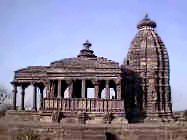Numerous towns and cities have developed by leaps and bounds in each and every state of India . The state of Madhya Pradesh too houses cities and towns as well. Hindoria is a `nagar panchayat` that has been established in the district of Damoh of the same state.

The strategic location of Hindoria town too is quite significant. The Hindoria town has been established at 23.9° N 79.57° E. It has an average altitude of 385 meters or 1263 feet.
There is certain information that one needs to know in order to identify any town or place. In case of Hindoria town also one can find several data like its population, literacy rate from surveys of the experts. The census report of India that came out in the year 2001 is quite significant in this regard. According to the report, the total population of the Hindoria town has been enumerated to be 14,426. Out of the total population , the males comprise of 52 percent , while the rate of females constitutes of 48 percent. In Hindoria town , 17 percent of the total population is below 6 years of age.
Literacy rate too adds on to the information of the town of Hindoria. Interestingly, the average literacy rate is 60 percent which is higher than that of the nation as a whole. The average literacy rate of India has been measured to be 59.5 percent. Delving deep into details, it can be said that male literacy rate is 71 percent and rate of female literacy is 47 percent .
Being an integral part of the Damoh district, it becomes quite obvious that the Hindoria town too follows the trend and tradition of the whole area. Numerous places of interest have developed within the district. These include Jatashankar, Nohleshwar temple , Giri Darshan , The fort of Sindurgarh , Nidan Kund, Nazara, Sad Bhawna Sikhar .



















